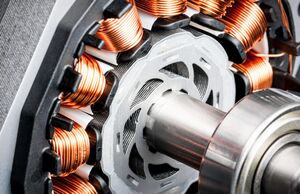Blog Information
- Posted By : jack wyatt
- Posted On : May 23, 2023
- Views : 104
- Category : General
- Description : Two types of DC motors: brushed and brushless, with different torque, speed, noise, lifetime, and cost considerations. Read more here.
- Location : United States
Overview
The technological landscape of power tools has witnessed a paradigm shift, with brushless motors increasingly becoming the leading choice among professionals. This incites a pertinent question – why the burgeoning popularity? The answer lies within the distinct disparities and implications between brushed vs brushless motors.
A Basic Overview Of A Brushed Dc Motor
To unravel the complexities of the brushed vs brushless motors debate, we need to understand the fundamental operation of a Direct Current (DC) motor. The driving force behind these motors hinges on magnetic interaction. The essence of a DC motor is to continually pull the rotating segment (rotor) towards the stationary magnets (stator) via an opposite magnetic charge.
Imagine this scenario: you're running, continually trying to catch a tantalising treat – a delectable chocolate eclair – hung in front of you. But how do you keep that chase going? The answer is rather intricate, involving permanent magnets that retain a fixed charge and a set of electromagnets that fluctuate their charge, or polarity, during the rotation. The distinction between brushed vs brushless motors largely revolves around how this polarity change is executed.
Peering Into The Mechanics Of A Brushed Motor
Inside a brushed motor, four primary components are involved: permanent magnets, an armature, commutator rings, and brushes. The stator, or the static part of the motor, consists of permanent magnets, while the spinning part, the rotor, involves an armature. Copper usually forms these rotor coils, although aluminum may also be used.
As the motor is powered, the armature, now electromagnetically charged, is drawn towards the opposing charged permanent magnet. As this interaction unfolds, the commutator ring spins and moves from one carbon brush to another, resulting in a polarity reversal. Now the charged armature seeks the other permanent magnet while being pushed away by a like charge. It's a constant chase, akin to switching between a chocolate eclair and a healthier, less appealing fruit smoothie.
Probing The Interworkings Of A Brushless Motor
A brushless motor eliminates the need for a commutator and brushes, introducing an electronic controller in their stead. The rotor now consists of permanent magnets, while the stator is an array of stationary electromagnetic coils. The controller navigates the power to each coil based on the charge required to attract the permanent magnet.
Cost-wise, brushed motors are simpler and cheaper to manufacture, given the increasingly expensive copper components. However, brushless motors involve embedding a sort of microcomputer, inflating their production cost.
Brushed vs brushless Motor Efficiency
Brushless motors outshine their brushed counterparts on several fronts, primarily due to the absence of brushes and a commutator. The brushes in a brushed motor produce friction, restricting speed and generating heat, much like pedaling a bicycle with a semi-engaged brake. Brushless motors, in contrast, operate cooler and convert more electricity into usable power. They also bypass the need for regular maintenance as brushes eventually wear down and require replacements.
The design of brushless motors, integrating an electronic controller, allows for a more compact and lightweight assembly. Thus, we witness power tools with significantly reduced size yet uncompromised power.
Brushed vs brushless Motor Torque
There is a widespread misconception regarding torque in relation to brushed vs brushless motors. The motor design doesn't inherently dictate the torque. However, as brushless motors employ advanced electronic controls, they can supply additional power when required.
With brushless motors, if the battery and motor are within temperature limits, the electronic controls can demand and procure more
power from the battery pack when the motor slows under load. This feature allows tools like brushless drills and saws to maintain a higher speed under load, thereby enhancing their speed.
A Closer Examination Of Brushless Dc (Bldc) Motor Technology
In a brushless motor, commutation or polarity alteration initiates and sustains the motor rotation. To regulate speed, the stator voltage is varied, while torque control is achieved by reducing the stator voltage when the torque load surges above a certain threshold. This necessitates the incorporation of motor monitoring and sensors, with Hall effect sensors being an affordable option to track the rotor position and speed.
The Ultimate Showdown
The amalgamation of these advantages leads to an extended lifespan for brushless motors. Despite similar warranties for brushed vs brushless motors within a brand, the latter is expected to outlast its warranty, often by several years, making them a prudent investment for long-term use.
